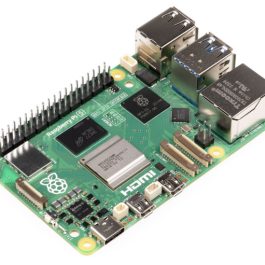Arduino Uno R3 With USB Cable
Original price was: 1,020.00৳ .850.00৳ Current price is: 850.00৳ .
Uno R1 to R3
- Microcontroller (MCU):[12]
-
- IC: Microchip ATmega328P (8-bit AVR core)
- Clock Speed: 16 MHz on Uno board, though IC is capable of 20 MHz maximum at 5 Volts
- Flash Memory: 32 KB, of which 0.5 KB used by the bootloader
- SRAM: 2 KB
- EEPROM: 1 KB
- USART peripherals: 1 (Arduino software default configures USART as a 8N1 UART)
- SPI peripherals: 1
- I²C peripherals: 1
- Operating Voltage: 5 Volts
- Digital I/O Pins: 14
- PWM Pins: 6 (Pin # 3, 5, 6, 9, 10 and 11)[13]
- Analog Input Pins: 6
- DC Current per I/O Pin: 20 mA
- DC Current for 3.3V Pin: 50 mA
- Size: 68.6 mm x 53.4 mm
- Weight: 25 g
- ICSP Header: Yes
- Power Sources:
-
- USB connector. USB bus specification has a voltage range of 4.75 to 5.25 volts. The official Uno boards have a USB-B connector, but 3rd party boards may have a miniUSB / microUSB / USB-C connector.
- 5.5mm/2.1mm barrel jack connector. Official Uno boards support 6 to 20 volts, though 7 to 12 volts is recommended. The maximum voltage for 3rd party Uno boards varies between board manufactures because various voltage regulators are used, each having a different maximum input rating. Power into this connector is routed through a series diode before connecting to VIN to protect against accidental reverse voltage situations.
- VIN pin on shield header. It has a similar voltage range of the barrel jack. Since this pin doesn’t have reverse voltage protection, power can be injected or pulled from this pin. When supplying power into VIN pin, an external series diode is required in case barrel jack is used. When board is powered by barrel jack, power can be pulled out of this pin.[14]
Description
The Arduino Uno is an open-source microcontroller board based on the Microchip ATmega328P microcontroller (MCU) and developed by Arduino.cc and initially released in 2010.[2][3] The microcontroller board is equipped with sets of digital and analog input/output (I/O) pins that may be interfaced to various expansion boards (shields) and other circuits.[1] The board has 14 digital I/O pins (six capable of PWM output), 6 analog I/O pins, and is programmable with the Arduino IDE (Integrated Development Environment), via a type B USB cable.[4] It can be powered by a USB cable or a barrel connector that accepts voltages between 7 and 20 volts, such as a rectangular 9-volt battery. It has the same microcontroller as the Arduino Nano board, and the same headers as the Leonardo board.[5][6] The hardware reference design is distributed under a Creative Commons Attribution Share-Alike 2.5 license and is available on the Arduino website. Layout and production files for some versions of the hardware are also available.
The word “uno” means “one” in Italian and was chosen to mark a major redesign of the Arduino hardware and software.[7] The Uno board was the successor of the Duemilanove release and was the 9th version in a series of USB-based Arduino boards.[8] Version 1.0 of the Arduino IDE for the Arduino Uno board has now evolved to newer releases.[4] The ATmega328 on the board comes preprogrammed with a bootloader that allows uploading new code to it without the use of an external hardware programmer.[3]
While the Uno communicates using the original STK500 protocol,[1] it differs from all preceding boards in that it does not use a FTDI USB-to-UART serial chip. Instead, it uses the Atmega16U2 (Atmega8U2 up to version R2) programmed as a USB-to-serial converter.[9]






Reviews
There are no reviews yet.